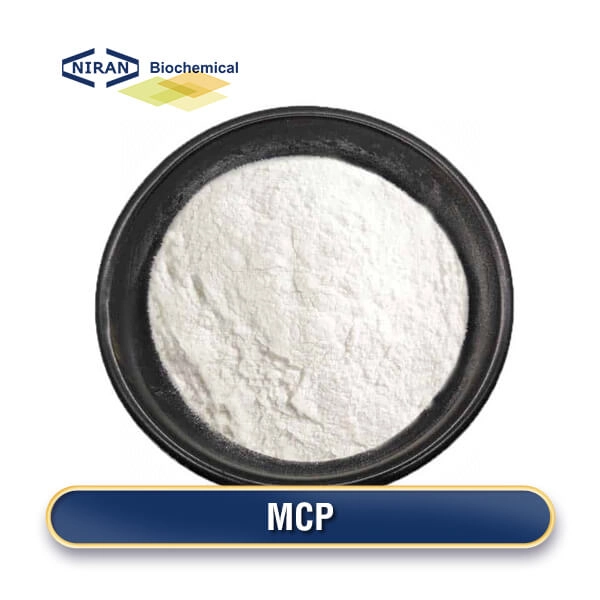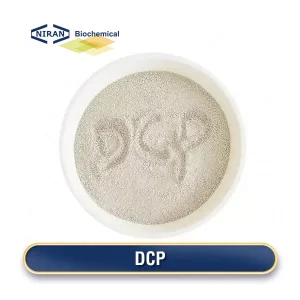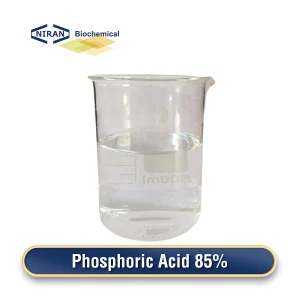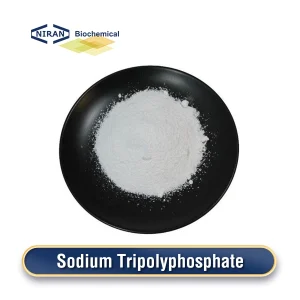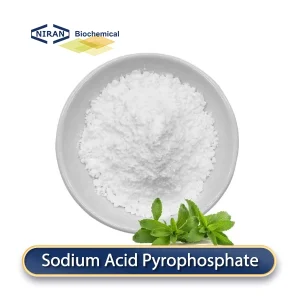Niran Biochemical
YOUR RELIABLE FOOD INGREDIENTS
Send Inquiry
Home » Products » Phosphates » MCP—Monocalcium Phosphate
MCP—Monocalcium Phosphate
- CAS: 7758-23-8
- Chemical Formula: CaH4P2O8
- Certification: KOSHER, ISO, HALAL, FSSC22000, BRC, etc.
- Standard:
- MOQ: 1000KG
- Shelf Life: 2 Years
Inquire Product
Product Description
What is MCP-Monocalcium Phosphate?
Similar to a white, crystalline powder, monocalcium phosphate is an inorganic substance. It dissolves readily in nitric and hydrochloric acids and only sporadically in water. Its principal applications include wine flavoring, fermentation promotion, food leavening, and calcium fortification.
MCP-Monocalcium Phosphate Manufacturing
There are three main methods for preparing monocalcium phosphate:
1. Wet process (mainstream manufacturing process) :
The wet process is the mainstream method for preparing monocalcium phosphate. The process includes raw material selection, acid hydrolysis reaction, filtration and washing, and drying.
First, high-purity phosphoric acid and calcium carbonate or calcium hydroxide are selected as raw materials. Then, phosphoric acid and calcium carbonate or calcium hydroxide are subjected to acid hydrolysis reaction at an appropriate temperature to generate monocalcium phosphate. Finally, after filtering, washing and drying steps, pure monocalcium phosphate crystals or powder are obtained.
2. Thermal process:
The thermal process is mainly used for large-scale production of monocalcium phosphate. Its steps include raw material selection, acid hydrolysis reaction, phosphoric acid and calcium hydroxide reaction, and concentration and crystallization.
First, high-purity phosphate rock and sulfuric acid or nitric acid are selected as raw materials. Then, the phosphate rock is subjected to an acid hydrolysis reaction with sulfuric acid or nitric acid to generate phosphoric acid. Next, the phosphoric acid reacts with calcium hydroxide to generate monocalcium phosphate. Finally, the reaction product is concentrated and cooled to crystallize to obtain monocalcium phosphate.
3. Direct synthesis method:
The direct synthesis method is mainly used for laboratory or small-scale production of monocalcium phosphate. The process includes raw material selection, direct reaction, crystallization and drying.
First, high-purity phosphoric acid and calcium oxide or calcium hydroxide are selected as raw materials. Then, phosphoric acid is directly mixed with calcium oxide or calcium hydroxide to react to generate monocalcium phosphate. Finally, through the crystallization and drying steps, pure monocalcium phosphate is obtained. This method is suitable for laboratory research and small-scale preparation.
Related parameters:
| Item | SPECIFICATION |
| Color | White color |
| Total P content (P unit)% | ≥21.00 |
| P(water soluble) % | ≥50.00 |
| Calcium Content (Ca unit) % | ≥14.00 |
| Fluorine Content(F unit) % | ≦0.10 |
| Arsenic Content (As unit) ppm | ≦25 |
| Lead Content (Pb unit) ppm | ≦30 |
| Moisture % | ≦4.0 |
Recommended dosage:
| Food Name | Maximum usage (g/kg) |
| Bread | 6 g/kg |
| Cake | 5 g/kg |
| Frozen food | 2 g/kg |
| Meat products | 4 g/kg |
| Sausages | 5 g/kg |
| Canned food | 2 g/kg |
| Cheese | 3 g/kg |
| Dairy products | 2 g/kg |
| Beverages | 2 g/kg |
| Juice | 2 g/kg |
| Jam | 3 g/kg |
| Sauce | 4 g/kg |
| Salad dressing | 3 g/kg |
Monocalcium Phosphate has a wide range of uses
1. Acidity regulator:
Monocalcium phosphate can adjust the acidity of food to maintain a suitable pH value, thereby improving the stability and flavor of food. It is widely used in beverages, condiments and canned foods.
2. Leavening agent:
In baked foods, monocalcium phosphate, as an important leavening agent, can react with sodium bicarbonate to produce carbon dioxide gas, causing the dough to expand during baking, making the product more fluffy and soft. It is often used in baked products such as bread, cakes, and muffins to increase the volume and texture of the product.
3. Calcium and phosphorus supplements:
Monocalcium phosphate is rich in calcium and phosphorus and is an effective nutritional enhancer. Phosphorus and calcium are crucial elements of teeth and bones. The addition of monocalcium phosphate helps prevent health problems such as osteoporosis and dental diseases, and improves the nutritional value of food. Dairy products, drinks, and foods that have been fortified frequently contain it.
4. Anticaking agent:
In powdered foods and condiments, monocalcium phosphate can prevent adhesion and agglomeration between particles, maintaining the looseness and good fluidity of the product. This is very important for increasing the items’ ease of use and prolonging their shelf life. It is often used in milk powder, coffee companion, seasoning and other products.
5. Improver:
Monocalcium phosphate can improve the texture and taste of food, enhance the stability and water retention of products. For example, in meat products, it can improve the tenderness and juiciness of the product; in ready-to-eat foods, it can improve the taste of food and make it more attractive. It is widely used in various processed foods and ready-to-eat foods, significantly improving the overall quality of the product.
User asked question:
Q: Are monocalcium phosphate and calcium phosphate the same substance? If not, is there a difference?
A: Monocalcium phosphate and calcium phosphate are not the same substance. Monocalcium phosphate (Ca(H₂PO₄)₂) is mainly used as a leavening agent and acidity regulator in the food industry, as well as an agricultural and feed additive; while calcium phosphate includes dicalcium phosphate (CaHPO₄) and tricalcium phosphate (Ca₃(PO₄)₂), which are used as a nutritional enhancer and anti-caking agent in food and a calcium-phosphorus supplement in medicine, respectively. The two are different in chemical structure, solubility and specific uses.

